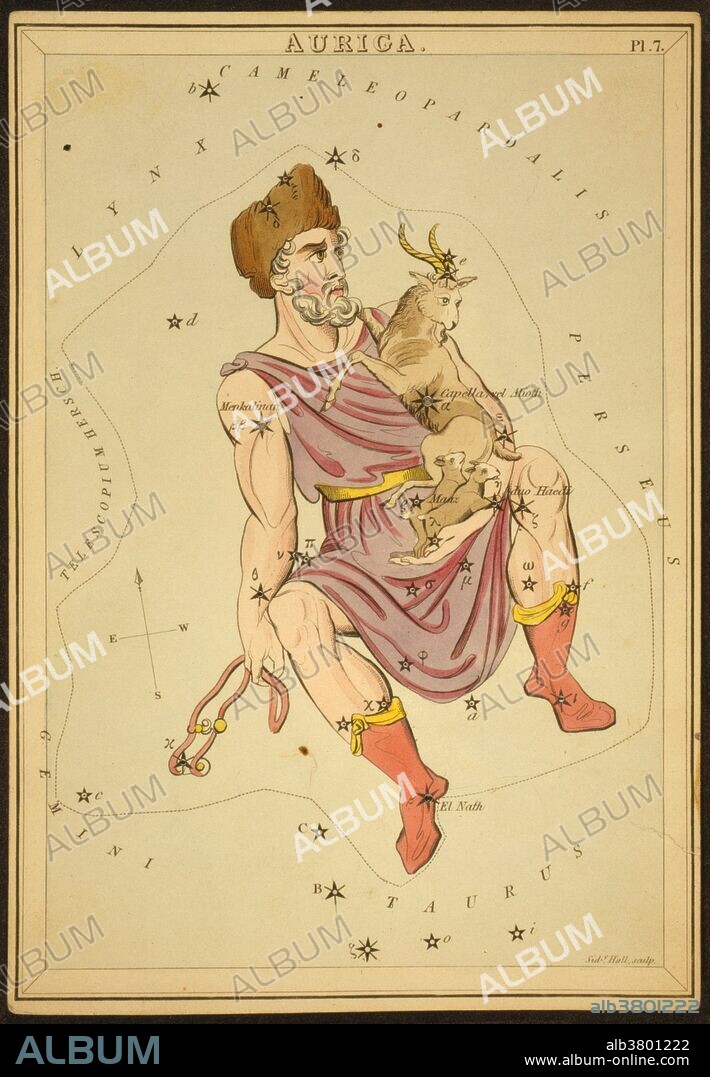alb3801222
Auriga Constellation, 1825

|
Add to another lightbox |
|
Add to another lightbox |



Buy this image.
Select the use:

Title:
Auriga Constellation, 1825
Caption:
Astronomical chart showing Auriga the Charioteer holding a ram, two ewes, and a bridle forming the constellation. Auriga is one of the 48 constellations listed by the 2nd century astronomer Ptolemy and remains one of the 88 modern constellations defined by the International Astronomical Union. Located north of the celestial equator, its name is the Latin word for charioteer, associating it with various mythological charioteers including Erichthonius and Myrtilus. Auriga is most prominent during winter evenings in the Northern Hemisphere, along with the five other constellations that have stars in the Winter Hexagon asterism. In Chinese mythology, Auriga's stars were incorporated into several constellations, including the celestial emperors' chariots, made up of the modern constellation's brightest stars. Urania's Mirror is a boxed set of 32 constellation cards first published by Samuel Leigh of the Strand, London, in or shortly before 1825. An unidentified lady, referred to by her nom-de-plume, Jehoshaphat Aspin, designed these whimsical astronomy cards. The engraver was Sidney Hall.
Category:
ILLUSTRATION • Science: History
Credit:
Album / LOC/Science Source
Releases:
Image size:
2700 x 3895 px | 30.1 MB
Print size:
22.9 x 33.0 cm | 9.0 x 13.0 in (300 dpi)
Keywords:
1825 • 19TH CENTURY • ART • ARTWORK • ASPIN • ASTERISM • ASTRONOMIA • ASTRONOMICAL • ASTRONOMY CARD • ASTRONOMY • AURIGA • CELEBRITIES • CELEBRITY • CELESTIAL BODY • CELESTIAL SPHERE • CELESTIAL • CHARIOTEER • CHIARIOTEER • CONSTELLATION CARD • CONSTELLATION • DRAWING • ENGRAVING • FAMOUS PEOPLE • FAMOUS • HEAVENLY BODY • HEAVENLY • HISTORIC • HISTORICAL • HISTORY • ILLUSTRATION • ILLUSTRATIONS • ILUSTRATION • IMPORTANT • JEHOSHAPHAT ASPIN • NOTABLE • PATTERN OF STARS • SCIENCE • SCIENCE: HISTORY • SIDNEY HALL • STAR CHART • STAR MAP • URANIA'S MIRROR • WELL-KNOWN • WINTER HEXAGON ASTERISM


 Pinterest
Pinterest Twitter
Twitter Facebook
Facebook Copy link
Copy link Email
Email
